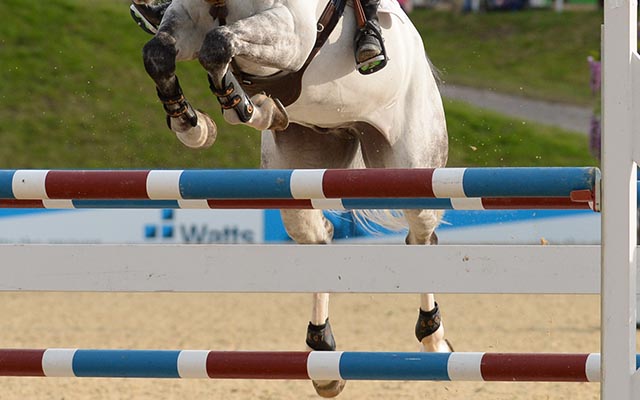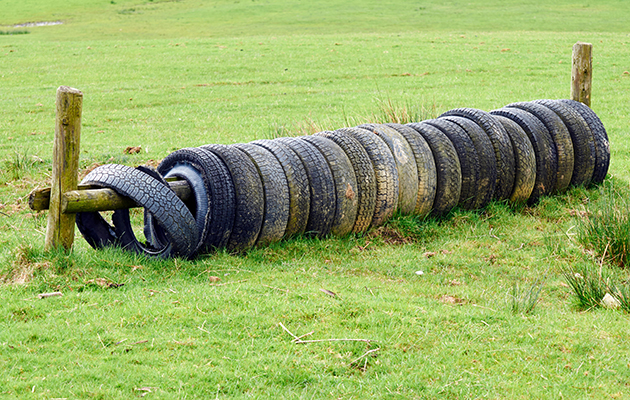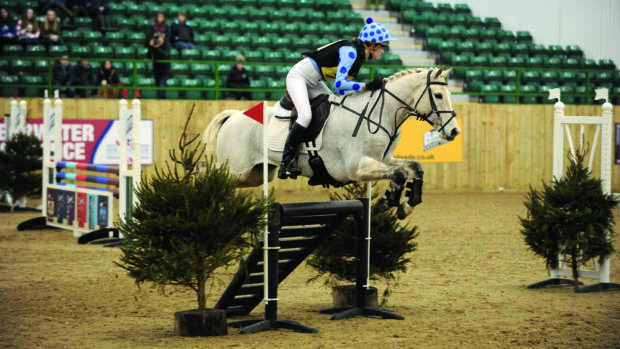How much thought do you give your approach to a jump? Jonty Evans was keen to stress the importance of riding a straight, accurate line to a fence to the riders he taught at an arena cross-country clinic which took place at Lincomb Equestrian Centre in Worcestershire earlier this month.
“Every single fence is on a line, it may be a dodgy line and it could be short, long or angled, but it’s a line and the line you take is very important,” explained the Irish Olympic event rider. “The line you take to a fence is the rider’s own choice, the horse is not responsible for the line you have taken, make sure you bear that in mind when you are jumping.”
Throughout the session, Jonty ensured his pupils jumped cross-country fences on various different lines, highlighting the following key points:
1. A rider’s job is to choose the line, the horse’s job is to jump the fence
The rider should decide when to turn on or off the line and how accurate the line is. Don’t let the horse dictate how you get to the fence and the line you take to get over it.
2. Don’t be late getting onto your line
Turn onto your line as early as possible and once on it focus on nothing changing. There should be no wobbles, just a straight approach.
3. Be accurate
Remember you are in charge of where you are jumping and how you approach the fence. Skinny fences shouldn’t be a problem if you are always accurate in your training. There may be less of the fence to jump, but if the horse is used to jumping over the middle of the jump, it shouldn’t matter.
4. Look straight ahead
Find something beyond the jump to look at and aim towards it. Doing this will help you stay on your line and ride straight.
5. Focus
Focusing on an object directly beyond the jump will also mean you are less likely to miss your stride as you are concentrating on what’s ahead rather than whether or not you have the right stride. While every fence is on a line, not every fence is on a stride.
6. Aim
Aiming your hands and legs at the jump will help you to approach it in a straight line.
Article continues below…
You might also be interested in:

22 showjumping tips from the top to unlock your success
Here are some words of wisdom from Sweden’s eventing manager and coach Frederik Bergendorff with regards to having success while

Subscribe to Horse & Hound magazine today – and enjoy unlimited website access all year round
7. Legs, hands, eyes
Use your legs to keep you and your horse on the right line. Keep your hands soft and your eyes up.
8. Forward but sensible
Keep riding forward but wait for the fence to come to you, don’t chase your horse into it.
For all the latest equestrian news and reports, don’t miss Horse & Hound magazine, out every Thursday




